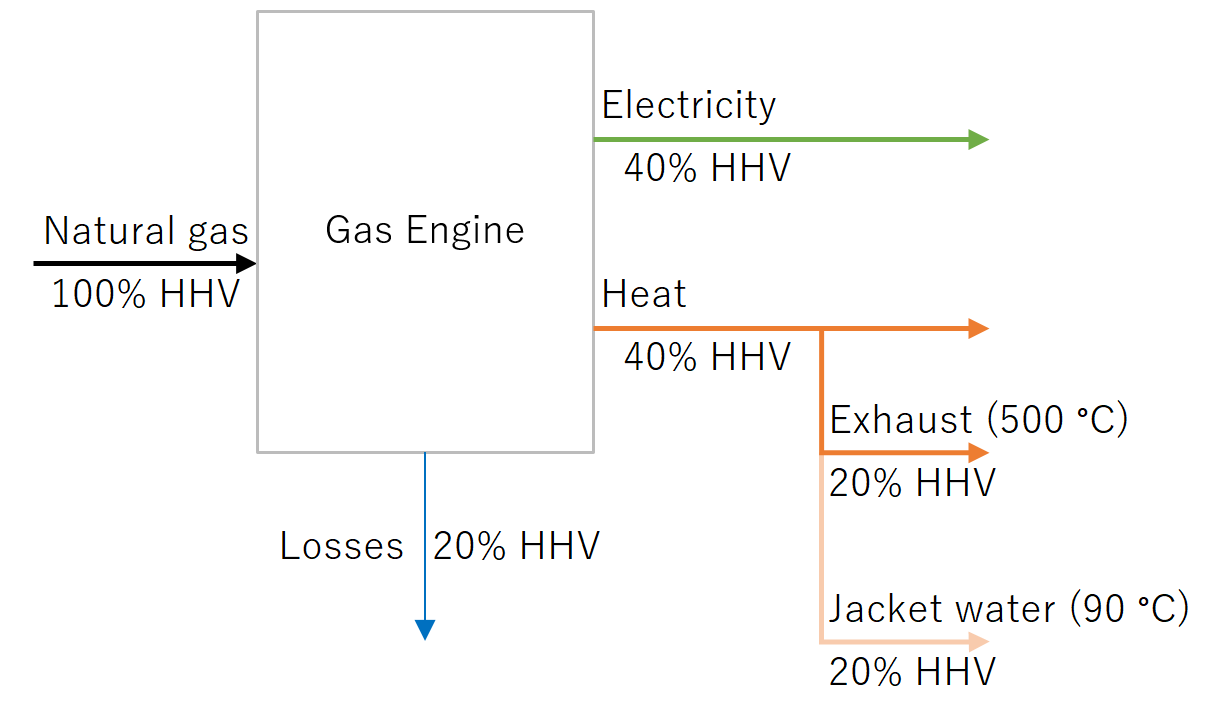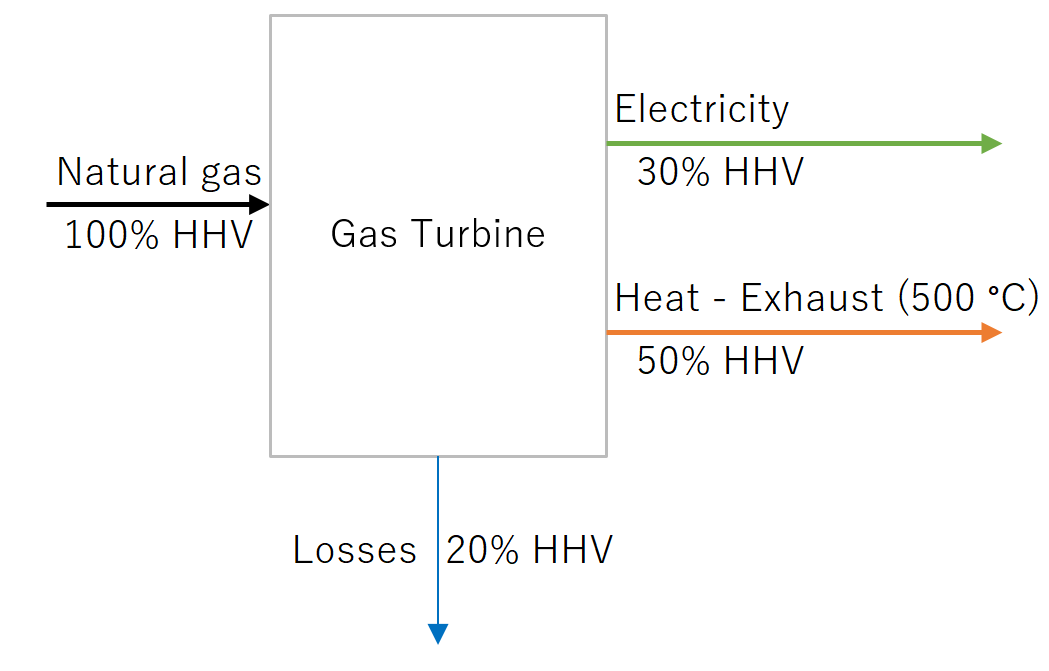Concise practical details about the two most common forms of gas based combined heat and power systems.
Combined heat and power (CHP) maximizes the recovery of heat and electricity from fuel. CHP is a mature technology, well suited for serving energy demands of industrial sites that consume both electricity and various grades of heat.
This post gives concise practical details about the two most common forms of gas based CHP - gas engines and gas turbines. Together the gas engine and gas turbine are around 90% of installed capacity of CHP in the UK.

Technical modeling of combined heat and power plants was my first area of professional specialization.
At ENGIE I developed technical models to support new projects. I also developed models to optimize the dispatch of existing plants, such as the Olympic Park district heating scheme in London.
This post focuses on the technical facts important to the design and operation of gas turbines and gas engines.
Both gas engines and gas turbines share several key characteristics:

A gas engine generates roughly the same amount of electricity and heat - i.e. the heat to power ratio is around 1:1.
The recoverable heat generated in a gas engine is split roughly half high grade (>500°C), half low grade (<100°C).
Gas engines are typically economic up until 5-6 MWe. Beyond that size gas turbines become competitive.
Having half of the heat generated as low quality means that a low-grade heat sink is required.
Many industrial processes only require high-temperature heat (typically served using steam). Without a low-grade heat sink for the low-grade heat the economics of a gas engine will suffer.
Typical low-grade heat sinks include:
This makes district heating and hospitals good applications of gas engine CHP.

A gas turbine generates roughly twice as much heat as power - i.e. the heat to power ratio is around 2:1.
A gas turbine operates with a lower electric efficiency (25-35% HHV) than a gas engine.
Unlike a gas engine, all of the heat generated by a gas turbine is high grade (>500°C). This makes gas turbines ideal for industrial sites that need high-temperature steam to run their processes.
This also allows gas turbines to be used in combined cycle mode:
This can be a key advantage of gas turbines, as the marginal efficiency of supplementary firing is higher than generating heat in a shell or water tube boiler.
Gas engines and gas turbines are the two most common forms of gas-based CHP, representing around 90% of UK installed capacity.
Both achieve total efficiencies around 80% HHV, with trade-offs between electric efficiency and heat quality:
Thanks for reading!